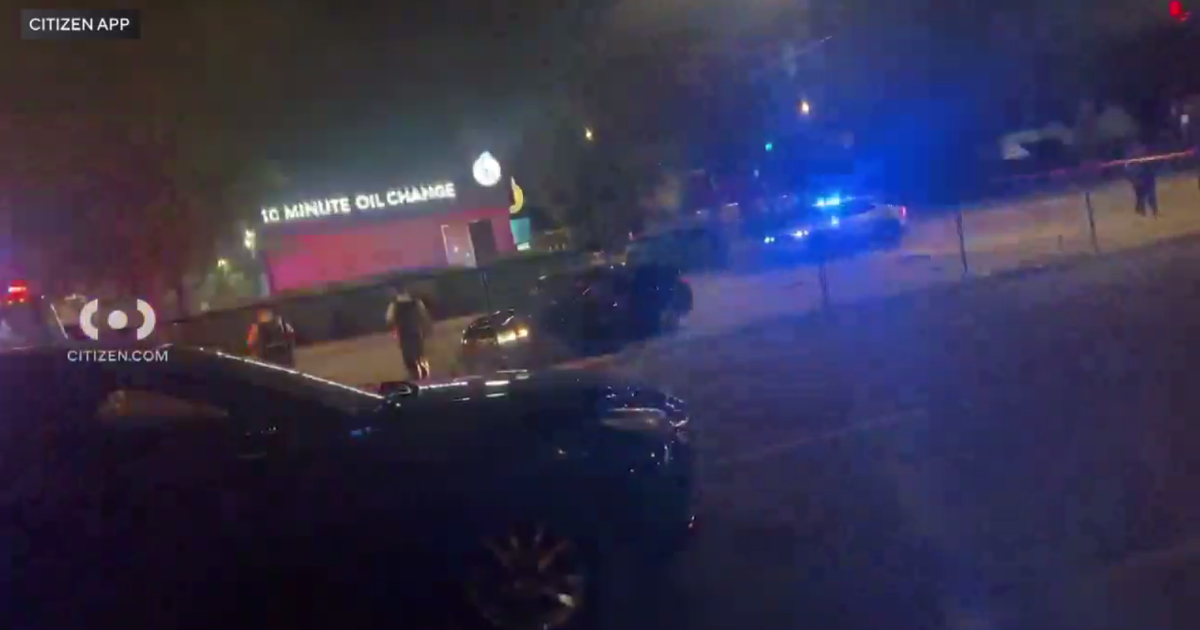Nation's Most Dangerous Neighborhood In Chicago?
A new report claims Chicago has the most dangerous neighborhood in America, although the neighborhood in question is not particularly infamous for crime.
The report by geographer Dr. Andrew Schiller for the commercial real estate site NeighborhoodScout.com said a neighborhood identified as "W. Lake St.," located on the Near West Side and bounded by Kinzie Street on the north, Washington Boulevard on the south, Damen Avenue on the east and Western Avenue on the west, is the most dangerous neighborhood in the country.
The report claims that the chances of being a victim of a violent crime in the neighborhood are 1 in 4. It says the neighborhood sees 257.72 crimes per 1,000 residents.
But official police statistics seem to show a different story.
The "neighborhood" named the most dangerous in the report corresponds directly to Census Tract 280500, which ranks toward the middle for crime among city neighborhoods.
Of the city's 873 Census tracts, the "W. Lake St." neighborhood tied for 417th for overall crime, with a total of 324 crimes reported in the past year. For violent crime, the neighborhood ranked 349th, with a total of 29 violent crimes reported in the past year.
But a story on the Web site WalletPop.com claims most crime data are "incomplete and inaccurate" because they are reported by individual law enforcement agencies, whereas Location Inc., which analyzed the data for the Neighborhood Scout report, "collects data from all 17,000 local law enforcement agencies in America, and uses a special approach to assign reported crimes from each agency to the city or town where they occurred."
The neighborhood crime data are compiled using "proprietary algorithms" that analyze total crime figures for the whole city, and the most recent year of final data from the FBI, WalletPop said.
"It is important to note that very recent changes in a neighborhood may not be reflected in our findings, as we use non-preliminary data in our models that take a year to be released," WalletPop said.
The neighborhood selected in the survey includes the former site of the Henry Horner Homes public housing development, which was plagued by gang violence in the nearly half a century it stood. But the last Henry Horner Homes building was demolished in 2005, and the development has since been replaced with the West Haven mixed income community.
Also making Neighborhood Scout list was a neighborhood called "4000 S. Federal St." or Census tract 380500. The report said the neighborhood presented a 1 in 11 chance of being a victim of a violent crime.
But police statistics showed the neighborhood was relatively safe overall, ranking 775th out of 873 Census tracts for total crime, with 110 total incidents, and 636th for violent crime in the past year, with only 10 violent crimes reported.
The Census tract, bounded by Pershing Road on the north, 43rd Street on the south, State Street on the east and Federal Street on the west, includes about half of the land that used to be occupied by the Robert Taylor Homes public housing development. The last Robert Taylor building was demolished in 2007, and much of the land is currently vacant.
A similar Neighborhood Scout study last year was strongly disputed. As the Chicago Justice Project reported, police Supt. Jody Weis pointed out that many of the Census tracts deemed dangerous in the Neighborhood Scout report are not even among the top 25 most violent in the city.
In a letter to the editor regarding a Chicago Sun-Times story in the 2009 Neighborhood Scout study, Weis also criticized the use of a "variety of census variables to project crime based on the total violent crime that occurred in the city of Chicago as whole," the Chicago Justice Project reported.
Controversy has erupted in the past over studies using mathematical models to draw conclusions about the threat of crime.
Back in 1999, the Web site APBNews.com ranked the University of Chicago the 29th most dangerous of 1,497 four-year colleges and universities in the U.S. The study was based on a mathematical model that factored in statistics within a two-mile radius of campus, reasoning that crime from outside the community would likely filter in.
"The report was decried by schools like Columbia University, the University of Southern California, and (the U of C) – all located in urban areas but boasting low on-campus crime rates-for making a campus look more dangerous than it is," the University of Chicago Magazine recalled in 2001.
CBS 2 Web Producer Adam Harrington contributed to this report.



